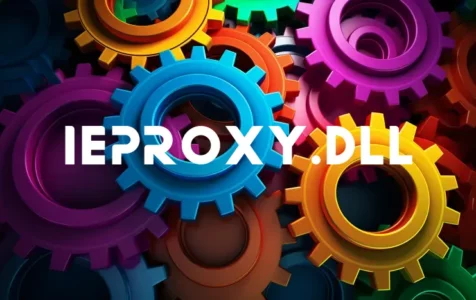What is the ieproxy.dll File?
The ieproxy.dll file is part of the Windows operating system provided by Microsoft Corporation. Specifically, the file functions as the IE ActiveX Interface Marshaling Library. It plays a critical role in the proper operation of Windows Internet Explorer, helping to handle ActiveX components, which are essential for various interactive features on websites and the user interface of IE.
Is ieproxy.dll Safe?
Yes, the ieproxy.dll file is generally considered safe. It is a legitimate system process required for your computer to run properly. The file is typically located in the directory `C:\Program Files\internet explorer`. If you find it elsewhere, particularly in a location that is not associated with Windows or Internet Explorer, it could potentially be a sign of a Trojan or other malicious software impersonating the legitimate DLL.
Could ieproxy.dll Be a Virus or Malware?
Though ieproxy.dll itself is not a virus, like any file in the system, it can be mimicked or infected by malware. Hackers and malicious programs can create files with the same name in unexpected locations to deceive users. That’s why it’s important to scan your computer regularly with updated antivirus software to prevent and detect any potential threats.
Common Issues Associated with ieproxy.dll
Users may encounter issues with ieproxy.dll for several reasons, such as:
Expert Tip: For smoother PC performance, consider using a PC optimization tool. It handles junk files, incorrect settings, and harmful apps. Make sure it's right for your system, and always check the EULA and Privacy Policy.
Special offer. About Outbyte, uninstall instructions, EULA, Privacy Policy.
1. A faulty application has caused a problem.
2. The file has been accidentally deleted or misplaced from its original location.
3. The DLL has been corrupted by malware or viruses.
4. There is a damaged Windows registry entry linked to ieproxy.dll.
5. Programs that require the DLL have been improperly installed.
Issues with ieproxy.dll often manifest as error messages during boot-up or while running certain applications. The errors indicate that the program cannot find the DLL, suggesting it’s either missing or corrupted.
How to Fix Issues with ieproxy.dll
If you’re encountering issues with the ieproxy.dll file, follow these steps to fix the problem:
1. Run a full system scan with your antivirus software to ensure your system is clean from viruses and malware.
2. Use the System File Checker (SFC.exe) utility to scan for corruptions in Windows system files and restore corrupted files.
– Open the Command Prompt as an administrator.
– Type `sfc /scannow` and press Enter.
– Wait for the scan and repair process to complete.
3. If a program requires ieproxy.dll and it’s missing, you may need to reinstall that program.
4. For missing DLL errors, you can sometimes manually download and replace the ieproxy.dll file. Ensure you use a reliable source and the correct version for your operating system architecture (32-bit or 64-bit).
5. If the ieproxy.dll error persists, you might consider installing the Microsoft Visual C++ Redistributable for Visual Studio, as some applications require C++ runtime libraries to function correctly.
Remember, downloading DLLs from untrusted sources can lead to more harm than good, including potential malware infections.
If you’ve completed these steps and are still facing issues, it is sometimes helpful to look for the experiences of other users. Community discussions offer a wealth of shared troubleshooting steps and solutions. Seek out forums like Microsoft’s official community where users can post their problems and get help from both technical specialists and knowledgeable peers.
In summary, the ieproxy.dll file is a crucial component of the Windows operating system, specifically linked to Internet Explorer. If you face issues related to the ieproxy.dll file, proceed with caution. Regular system maintenance and utilizing built-in Windows utilities can help keep your system running smoothly and prevent DLL-related errors.
